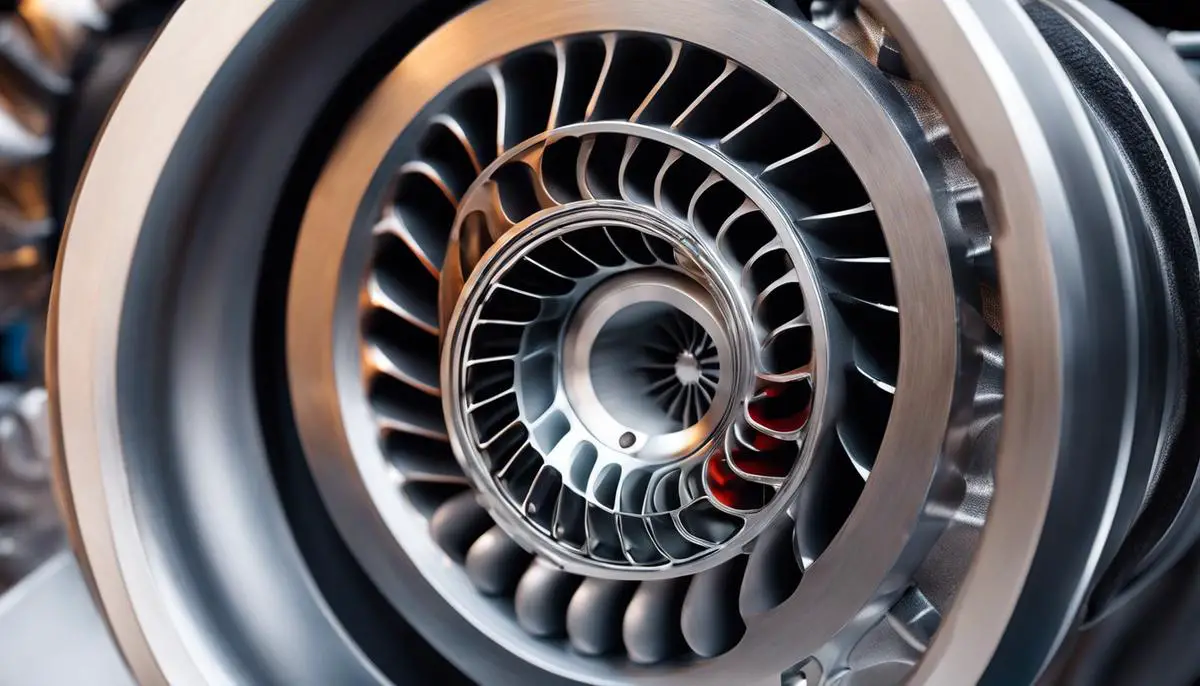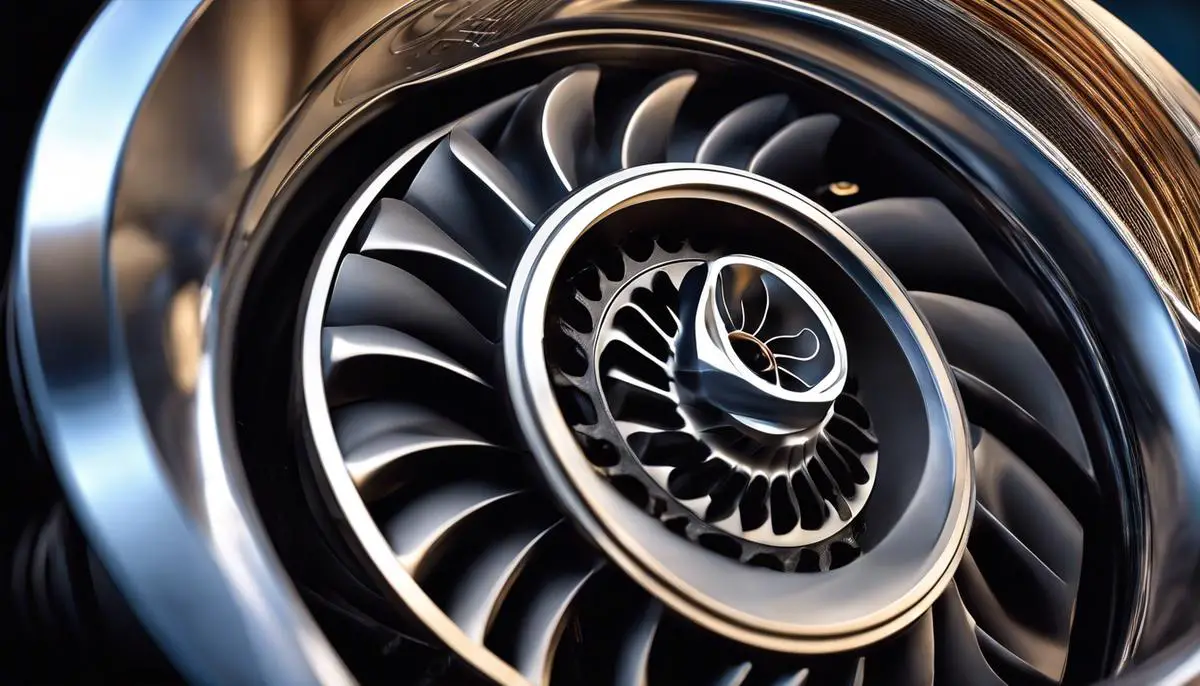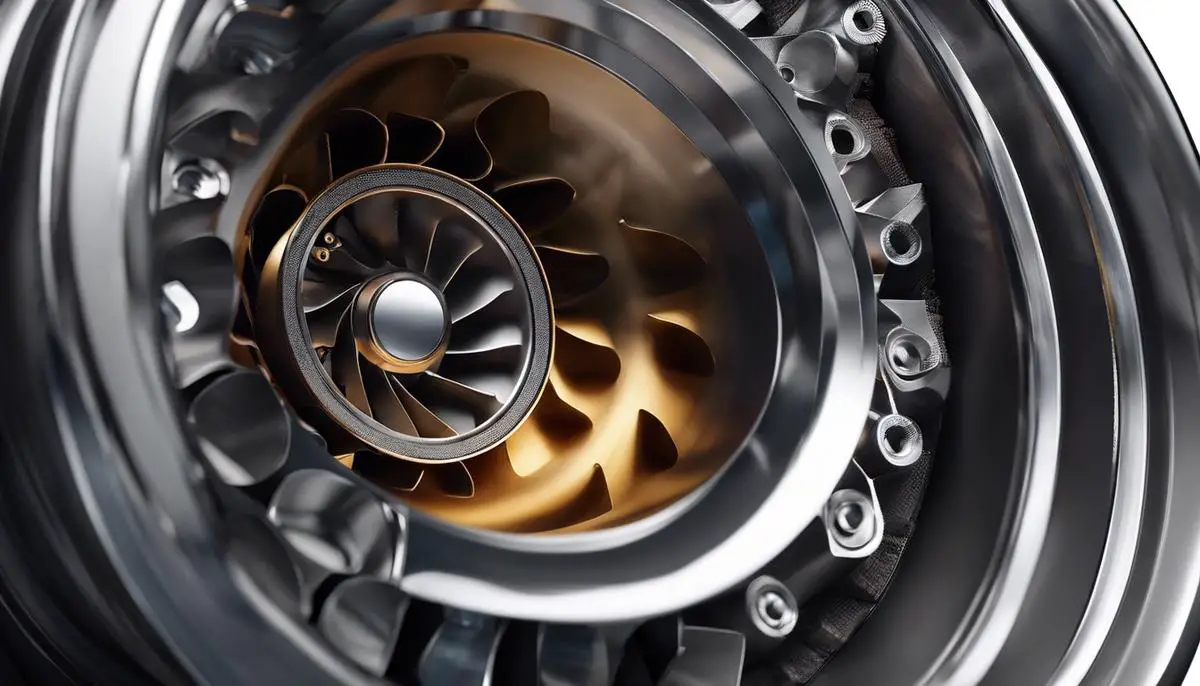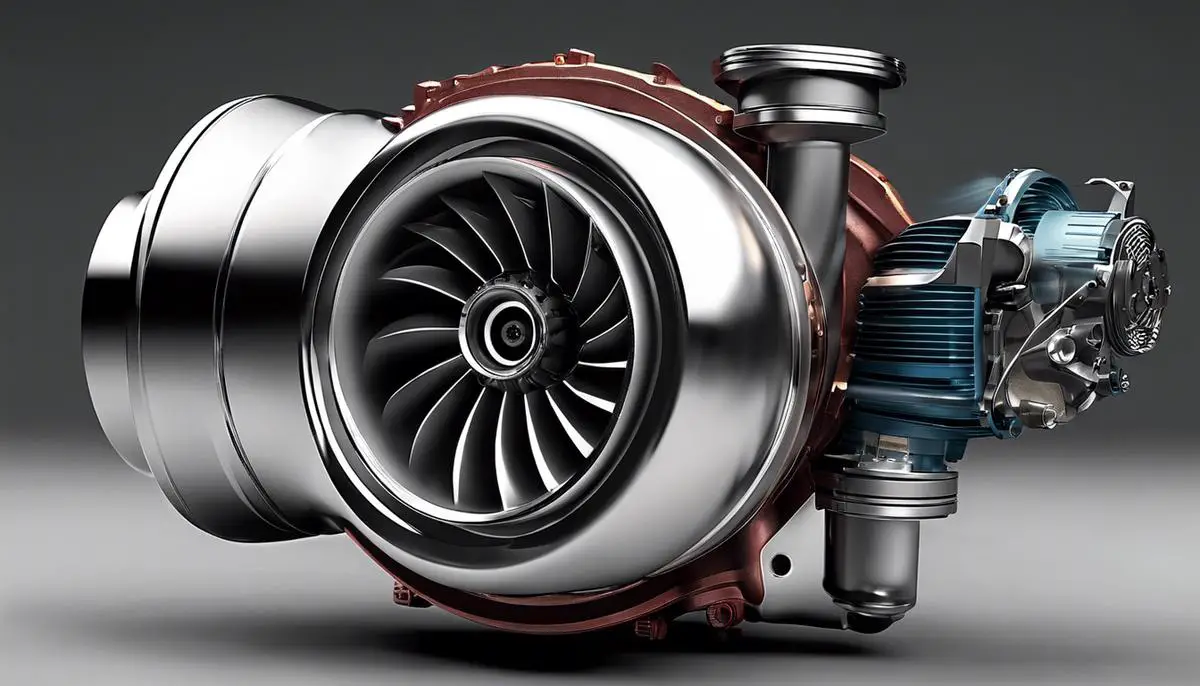In our quest for speed and power, automotive technology continues to evolve at an astonishing pace. At the heart of this quest is the turbocharger, a remarkable device that allows engines to output significantly more power than their naturally aspirated counterparts. In this exploration, we delve into the fundamentals of turbochargers, delineating on their construct, the core principles that drive their function, and the way they manipulate the physics of internal combustion engines. We further unpack the transformative role that turbochargers play in boosting engine power, enabling a more potent air-fuel mixture in the combustion chamber, thus bestowing cars with remarkable speed and dynamism.
Contents
Basics of Turbochargers
Turbocharged! Unraveling the Magic of Turbochargers
Welcome, fellow gearheads and engine enthusiasts! Today, we’re delving into the realm of that magical component nested within the heart of high-performance vehicles – the turbocharger. Known for delivering that adrenaline-pumping speed, turbochargers are nothing short of mechanical masterpieces. But what exactly are they, and how do they work? The answer is less complex than you might think.
Turbochargers, often referred to simply as “turbos,” are forced induction devices. They amp up an engine’s efficiency and power-output by forcing more air into the combustion chamber. By pumping in more oxygen, the engine can burn more fuel and, consequently, deliver more power. It’s a kind of engine-buffing magic that automotive enthusiasts everywhere crave.
To get a little technical but still keep it light, the turbocharger consists of two main parts: a turbine and a compressor. Now, the turbine part is like a wizard that harnesses the power of your car’s exhaust gases. As these gases surge out of the engine, they pass through the turbine, making it spin. And as any good wizard needs a partner, here enters the compressor.
Connected by a shaft to the turbine, the compressor is on the intaking side of the engine. When the turbine spins, the compressor spins too. Thanks to this partnership, as the compressor spins more and more quickly, it starts to suck in a large amount of air, which it then forces into the engine. Boom! You’ve got a larger volume of oxygen flowing into your engine, enabling it to burn fuel more efficiently and deliver more power.
Now onto the intercooler, an essential supporting cast member in this production. It helps optimize the turbocharger’s performance by cooling down the compressed air before it enters the engine. This is crucial as compressing air raises its temperature, which isn’t ideal. Hotter air is less dense and contains less oxygen, thus counteracting our aim of fuel burn efficiency.
A common question often heard among turbocharger discussions is the phenomenon of “turbo lag.” In layman’s terms – this is where the drama unfolds! Turbo lag is that frustrating delay experienced between the moment you slam down the accelerator and when the turbocharger kicks in to deliver the expected boost of power. This is because it takes some time for the exhaust gases to gather the force needed to spin the turbine fast enough.
As a quick dip into the tech-side, some modern vehicles employ variable geometry turbochargers to combat this issue. By adjusting the turbine’s housing’s shape depending upon the speed, it allows for optimal energy utilization. It keeps the turbo-spooled at low speeds, minimizing lag.
So, there it is, fellow enthusiasts – a whistle-stop tour through the role and function of turbochargers. They’re the magical forces that transform vehicles from mundane to monstrous, the wizards behind the curtain that deliver us performance and power. Until next time, keep those engines revving and that curiosity burning.

Role of Turbochargers in Enhancing Engine’s Power
Moving right along from our previous discussion, let’s delve into the heart of what makes turbochargers such a powerful addition to a vehicle: their ability to enhance a vehicle’s power.
First, it is vital to understand how turbochargers boost the vehicle’s horsepower. On the most basic level, a turbocharger increases the amount of air entering the engine, allowing more fuel to be combusted and more power to be created. This happens because the product of a combustion engine’s power is directly proportional to the amount of fuel and air mixture it can burn.
One appealing aspect of turbochargers is that unlike other modifications that may increase vehicle power, turbochargers operate on wasted energy. The hot exhaust gases leaving the engine spin a turbine, which drives a compressor that forces more air into the engine. It’s appealing because it doesn’t rely on the engine to directly drive an air compressor, ensuring less strain on the engine itself and more efficient fuel consumption.
An important factor to consider here is the boost pressure, which is the additional air pressure created by the turbocharger. A higher boost pressure means more air is forced into the engine, therefore significantly enhancing power output. It’s the boost pressure that proves nearly indispensable to those seeking substantial power increase without having to resort to an engine replacement or massive engine overhaul.
The turbocharger compressor also achieves something known as charge-air cooling. This process cools the air entering the engine from the compressor, reducing its volume and enabling further air (and therefore fuel) to enter the engine. This results in substantial power increase without significant changes in the vehicle’s overall weight and size.
They are also inherently scalable; they can be adjusted to suit the desired performance and efficiency need of the vehicle. Its scalability features allow for significant enhancements in fuel economy and reduction in carbon emissions which the gearheads, and even the eco-conscious drivers, find appealing.
Last but not least, turbochargers provide enormous power-boosting capabilities without drastically increasing the weight of the vehicle. Traditional methods of boosting vehicle power, like installing a larger engine, come with the drawback of substantial weight increase, adversely affecting vehicle performance. Turbochargers work by amplifying the existing capabilities of the engine, creating a lean, mean, turbo-powered machine!
That’s the magic of turbochargers—a compact, ingenious device that brings racecar-levels of power to your everyday drive, utilizing otherwise wasted energy and fostering a love for the open road. The surge of power you feel when that turbo kicks in is simply unmatched by other modifications. And now you know just how that is accomplished. Reap the rewards of continued innovation, hit the gas, and feel the turbocharged difference!

Effects of Turbochargers on Vehicle’s Performance
Taking our love for automobiles one notch higher, let’s delve deeper into the fascinating world of turbochargers. Like a perfect symphony that enhances the overall performance of a musical piece, a turbocharger plays a pivotal role in amplifying a vehicle’s performance. Although the introduction, mechanics, and overall functioning of a turbocharger have been discussed earlier, it is time to visualize the pros and cons of turbochargers to vehicle’s performance through the eyes of an automotive enthusiast.
The turbocharger’s real charm lies in augmenting your vehicle’s horsepower. The more air the turbocharger channels into the engine, the more power it generates. It’s a simple yet effective way to get your vehicle to perform at its peak capacity. One size doesn’t fit all, thus turbochargers are adjustable and can be tailored as per the performance requirements. This versatility is a discernable advantage for those seeking either comfort or thrill in their rides.
An essential highlight of the turbocharger is its focus on efficiency. It repurposes the waste energy from the engine’s exhaust gases, hence performing two substantial tasks simultaneously – decreasing fuel consumption and increasing power. The turbocharger thus contributes significantly to not just enhancing vehicle performance but also reducing carbon emissions. It’s a win-win situation for both automobile fanatics and the environment.
Furthermore, turbochargers significantly increase a vehicle’s power-to-weight ratio. With a turbocharger, a smaller, lighter engine can provide the same power output as a larger, heavier engine without one. This allows the car to be lighter and more maneuverable while still having the power performance associated with a bigger engine.
Nevertheless, one must be aware that not all that glitters is gold, which applies to turbochargers as well. Despite their stellar advantages, turbochargers encompass certain downsides. For starters, turbochargers undoubtedly add a layer of complexity to the engine. With increased complexity comes a higher probability of potential mechanical hiccups.
Moreover, the introduction of extra air into the engine can lead to increased internal stress. This need for increased durability can lead to heavier engine components, mitigating some of the potential weight savings. Also, while the turbo-lag issue can be tackled to some extent with variable geometry turbochargers, even these advanced units cannot entirely eliminate this performance drawback.
Furthermore, despite the enhanced performance, the efficiency gains promised by turbocharging may not always materialize in real-world driving. Typically, testing procedures do favor turbocharged engines, but in day-to-day driving, they may not deliver the anticipated fuel efficiency, especially if the power is being used regularly.
However, it’s safe to say that despite these downsides, the benefits offered by turbochargers remain substantial – enhanced power, reduced fuel consumption, and versatility, to name a few. These advantages have helped turbochargers nestle themselves among the top modifications loved by automotive enthusiasts.
So while the journey with turbochargers might have speed bumps, it surely leads to a road with breathtaking experiences. After all, nothing quite matches the thrill of hearing the turbo spooling up and feeling the adrenaline rush as the extra power kicks in, making each drive an extraordinary adventure.

On dissecting the function and impact of turbochargers on vehicle performance, it turns out to be a delicate balance of benefits and trade-offs. While unquestionably, these powerful devices provide an extraordinary boost in terms of power, enabling vehicles to reach unprecedented speeds and performance levels, they’re also known for their notorious turbo lag, which can hinder immediate response. Even so, the sheer potency and invigorating thrill that turbochargers inject into a drive make these downsides worth the trade. The journey of understanding turbochargers has been a fascinating deep dive into the cornerstones of automotive power and performance, unmasking the science that fuels our speediest machines.



